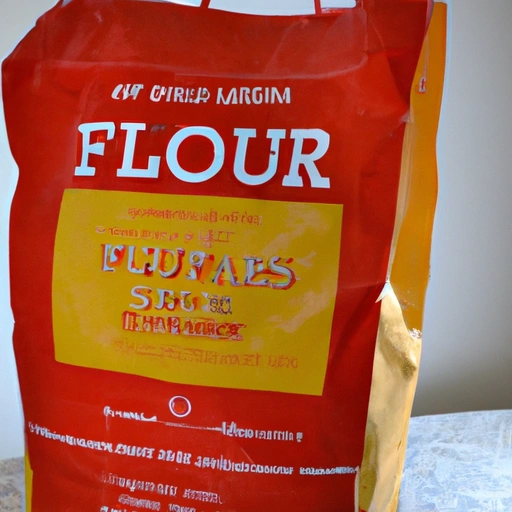Self-Rising Flour
Description

Self-rising flour is a pre-mixed combination of all-purpose flour, baking powder, and salt. The proportions typically include about 1 1/2 teaspoons (7.5 ml/8 grams) of baking powder and 1/4 teaspoon (1.25 ml/1.5 grams) of salt for every 1 cup (240 ml/120 grams) of all-purpose flour. This convenient blend is a staple ingredient in many kitchens around the world, offering a quick and reliable rising agent for a variety of baked goods. The inclusion of the leavening agents makes it particularly suited for recipes where a consistent and even rise is desirable.
Common uses
Self-rising flour is most commonly used for making quick breads, biscuits, scones, and certain types of cakes. It is a go-to ingredient when a light and airy texture is desired without the additional steps of mixing separate leavening agents.
Nutritional value
Calories
Self-rising flour contains about 364 calories per 100 grams or roughly 3 1/2 cups (840 ml/420 grams).
Protein
Each 100 grams of self-rising flour has approximately 10 grams of protein.
Fat
There is about 1 gram of fat per 100 grams of self-rising flour.
Carbohydrates
Carbohydrates are present at about 76 grams per 100 grams of self-rising flour.
Vitamins
Self-rising flour typically contains fortified vitamins such as niacin, thiamine, riboflavin, and folic acid.
Minerals
Important minerals found in self-rising flour include calcium, iron, and potassium, owing to the addition of baking powder and salt.
Health benefits
Since self-rising flour is made from all-purpose flour, it shares similar health benefits, providing energy from carbohydrates and containing essential nutrients due to fortification. The addition of baking powder increases its calcium content, which is beneficial for bone health.
Potential risks
Potential risks of using self-rising flour include consuming too much sodium from the added salt, and the baking powder may contain aluminum compounds, which some people prefer to avoid. Furthermore, like all wheat flours, it contains gluten and is not suitable for those with celiac disease or gluten sensitivity.
Common recipes
Popular recipes using self-rising flour include biscuits, pancakes, muffins, and certain quick breads.
Cooking methods
Self-rising flour is ideal for baking methods that require a quick rise without the need for yeast fermentation, such as quick breads or batter-based recipes.
Pairing with other ingredients
Self-rising flour pairs well with both sweet and savory ingredients, making it versatile in creating dishes ranging from fruit cobblers to savory scones.
Summary
Self-rising flour is a versatile baking component that combines all-purpose flour with baking powder and salt to simplify the baking process. While it offers convenience and consistency in recipes, users should be mindful of its sodium content and gluten presence. With its global usage, self-rising flour helps both novice and experienced bakers achieve a perfect rise in a variety of dishes.